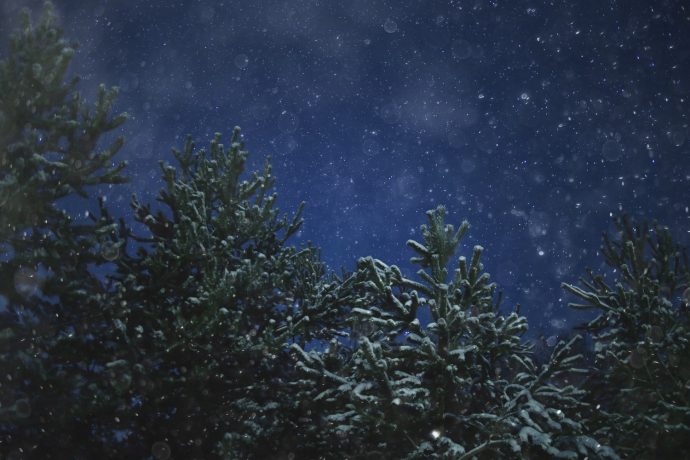Most years pastors, professors, and spiritual leaders have to find a way to help their congregations connect and identify with the season of Advent—a season of expectation. A season of arrival. A season of hope in the midst of darkness.
A season we now understand in visceral and powerful ways.
To say 2016 was a difficult year might be the understatement of the century. In 2016 we witnessed (at the time of writing) 427 mass shootings, the result of which killed more than 500 and wounded more than 1,600 men, women and children.
In 2016 we saw our culture divide harshly over issues of racial bias and police brutality. We watched in horror as five police officers were killed by sniper fire, and we’ve mourned the loss of more than fifty officers to “felonious acts.” Names like Philando Castile, Alton Sterling, Eric Garner, Freddie Gray, Tamir Rice, and so many more became trending hashtags as our country wrestled with what it means to be black in America.
We watched Hillary Clinton weather scandal after scandal amidst allegations of misuse of email servers and possible pay-for-play activity through her nonprofit. We watched Donald Trump mock disabled reporters, call for mass deportations of undocumented immigrants, call for flat refusal of offering asylum to war-ravaged refugees because of their potential religious beliefs—all while fending off accusations of sexual assault. Then, in just the past month, we have witnessed the escalation of racially fueled hate speech and crimes.
These events have left many in fear, gathering together to mourn and cry, desperately wondering if we will ever find unity or if we’ll ever heal.
The days are short. The nights are long. Depression spikes during the winter months, and for a large percentage of our population—those suffering the loss of loved ones and the pain from broken relationships—this season feels like anything but the most wonderful time of the year. After a year filled with such pain and division, how can we possibly move on? How can we continue to watch our world rip itself apart? How can we experience hope in the midst of such despair? How can we grieve while singing songs like “Joy to the World” and “Go Tell It on the Mountain” when the only things we would like to shout from the mountain fall more into the “lament” category than that of “lighthearted carols”?
Yet we move on because of Advent.
The history of Advent is steeped in suffering. Advent is the season of expectation. It’s the season of hope. It’s the season where humanity eagerly hopes for and anticipates the coming of a Savior. What humanity received was a baby—who would live, die, and conquer death. Who would eventually redeem all things. Whom death could not hold down—which is remarkable because death relentlessly pursued that baby.
In the midst of the worst the world could throw at him, he loved. He forgave. He redeemed. He restored.
In the wake of the unremarkably ordinary birth of Jesus, an untold number of innocent baby boys were killed. As he grew into a man, the powerful plotted his death—over and over again. After they finally killed him (and he rose from the dead and ascended into heaven), those who dared follow in his footsteps found themselves stoned, beheaded, crucified, fed to lions—all in the name of that baby who was born in Bethlehem.
To a world hoping for a Savior, to a people desperate for a leader who would make things great once more—a visionary who would lead Israel to power and greatness—this man seemed to exhibit and experience only suffering. And yet, in the midst of the worst the world could throw at him, he loved. He forgave. He redeemed. He restored. He voluntarily shed his blood for the redemption of men and women yet to be born, men and women who would never accept it. Men and women who would never deserve it. Yet, he shed that blood voluntarily and with great love.
This good news—that, through countless deaths and countless assaults, and in the face of great oppression and suffering, toppled kingdoms and transformed a planet—started during Advent. Though Advent and Christmas occur in the twelfth month of the year, the church teaches that Advent is actually the beginning. As we light the candles and sing, “O come, O come, Immanuel” into the still, dark night, we sing with confidence that our most difficult times are not the end of the story. We sing to remind ourselves that this is the beginning.
Advent, in its beauty and light, is the start of something new and beautiful. It represents something worth hoping for. Someone worth hoping in.
Advent, in its beauty and light, is the start of something new and beautiful. It represents something worth hoping for. Someone worth hoping in.
So, as we mourn years like 2016, as we suffer injustice, and as we lament oppression, we sing bravely, knowing the King we sing to is a King who understands. A King who cares. A King who is in the midst of reconciling everything.
So, even though we may not be able to see the brightness of the future through the darkness of the present, we sing,
Come, thou long-expected Jesus
Born to set thy people free;
From our fears and sins release us,
Let us find our rest in thee.





1 Comments
Linda Sprowl
Thank you again.